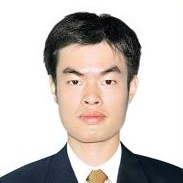Submission Deadline: 01 August 2025 (closed) View: 4992 Submit to Journal
Full Prof. Hyeonjoon Moon
Email: hmoon@sejong.ac.kr
Affiliation: Department of Computer Science and Engineering, Sejong University, Seoul 05006, Republic of Korea
Research Interests: image processing, biometrics, artificial intelligence and machine learning

Rearch Professor Lien Minh Dang
Email: minhdl@sejong.ac.kr
Affiliation: Department of Information and Communication Engineering and Convergence Engineering for Intelligent Drone, Sejong University, Seoul 05006, Republic of Korea
Research Interests: deep learning; object detection; NLP; pattern recognition; computer vision

Dr. Tri-Hai Nguyen
Email: hai.nguyentri@vlu.edu.vn
Affiliation: Faculty of Information Technology, School of Technology, Van Lang University, Ho Chi Minh City70000, Vietnam
Research Interests: Algorithms; Reinforcement Learning; Swarm Intelligence; UAV; Resource Allocation; Machine Learning

In recent years, the landscape of image and video processing has undergone a transformative shift, driven by advancements in methodologies and technologies across several domains, including computer vision, 3D modeling, computer graphics, and multimedia. The rapid evolution of these fields has spurred the development of innovative applications and techniques, enhancing our ability to interpret and interact with visual data in unprecedented ways. Particularly, the rise of machine learning, and more specifically deep learning, has revolutionized image processing by enabling the efficient analysis of massive datasets, leading to the discovery of new patterns and the creation of sophisticated analytical procedures.
This Special Issue seeks to highlight the latest breakthroughs and applications in image and video processing, with a dual focus. Firstly, it explores novel uses of cutting-edge devices for data acquisition and visualization, such as CCTV cameras, 3D scanners, virtual reality (VR) glasses, and robotics, demonstrating how these technologies are reshaping the field. Secondly, it delves into new methodologies for processing large-scale datasets, leveraging modern pattern recognition and machine learning techniques, including deep learning and hypergraph learning, to advance the state of the art in image analysis.


 Submit a Paper
Submit a Paper Propose a Special lssue
Propose a Special lssue